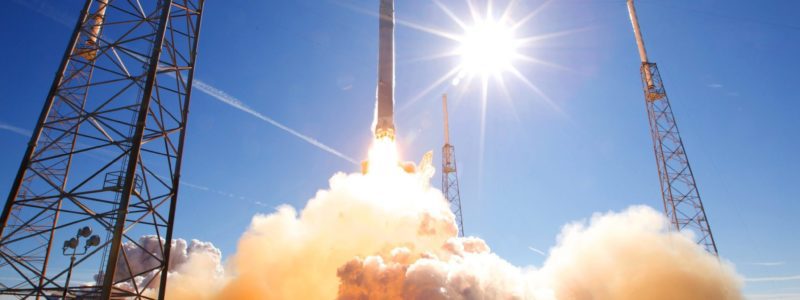
The European light launch vehicle (LV) Vega with a Ukrainian engine has successfully placed in orbit Italy’s Earth remote sensing satellite PRISMA.
According to the press release of the Pivdenne (Yuzhnoye) Design Bureau, the satellite aboard Vega LV lifted off the European spaceport of Kourou (French Guiana) at 0350 on March 22, 2019. This was the fourteenth launch under the Vega program and the first in 2019.
PRISMA spacecraft with 879 kg weight is a small satellite of the Italian Space Agency (ASI). PRISMA is equipped with an innovative electro-optical instrumentation. The instrument is able to work in numerous, narrow and contiguous bands arranged from the visible to the near infrared (VNIR, Visible and Near InfraRed) and up to the infrared shortwave (SWIR, Short Wave InfraRed). The mission will help in monitoring agricultural activities, water resources and studying main environmental processes. PRISMA began a five-year operational mission.
The Vega was developed by the European Space Agency (ESA) in cooperation with the Italian Space Agency (ASI). It is intended for launching into a solar-synchronous orbit with a height of 1,200 km satellites weighing up to 1,200 kg or into a polar orbit with a height of 700 km satellites weighing up to 1,500 kg.
The propulsion engine for the 4th stage of the PH RD-868P was developed by the Yuzhnoye Design Bureau and manufactured the Yuzhmash PO (both from Dnipro, Ukraine). According to the developer, the new liquid engine is based on the intercontinental ballistic missile carrier (ICBM) RS-20.
A successful test run of the Vega rocket was carried out in February 2012. Since May 2013, ESA has begun commercial operation of the new launch vehicle. Some 30 satellites have been launched into orbit for customers.
In July 2017, Ukrainian participants in the Vega program cooperation extended the contract signed in 2012 with a European contractor – Italian Avio SpA – for the supply of production engines for the Vega rocket until 2020.
The government of Ukraine and the ESA signed an agreement on cooperation in the peaceful uses of outer space in 2008.
The structure of the ESA includes 17 European countries.
Ukraine is currently preparing the creation of an information hub for the implementation of the cooperation agreement with the EU signed in May 2018 in the European space monitoring program Copernicus.